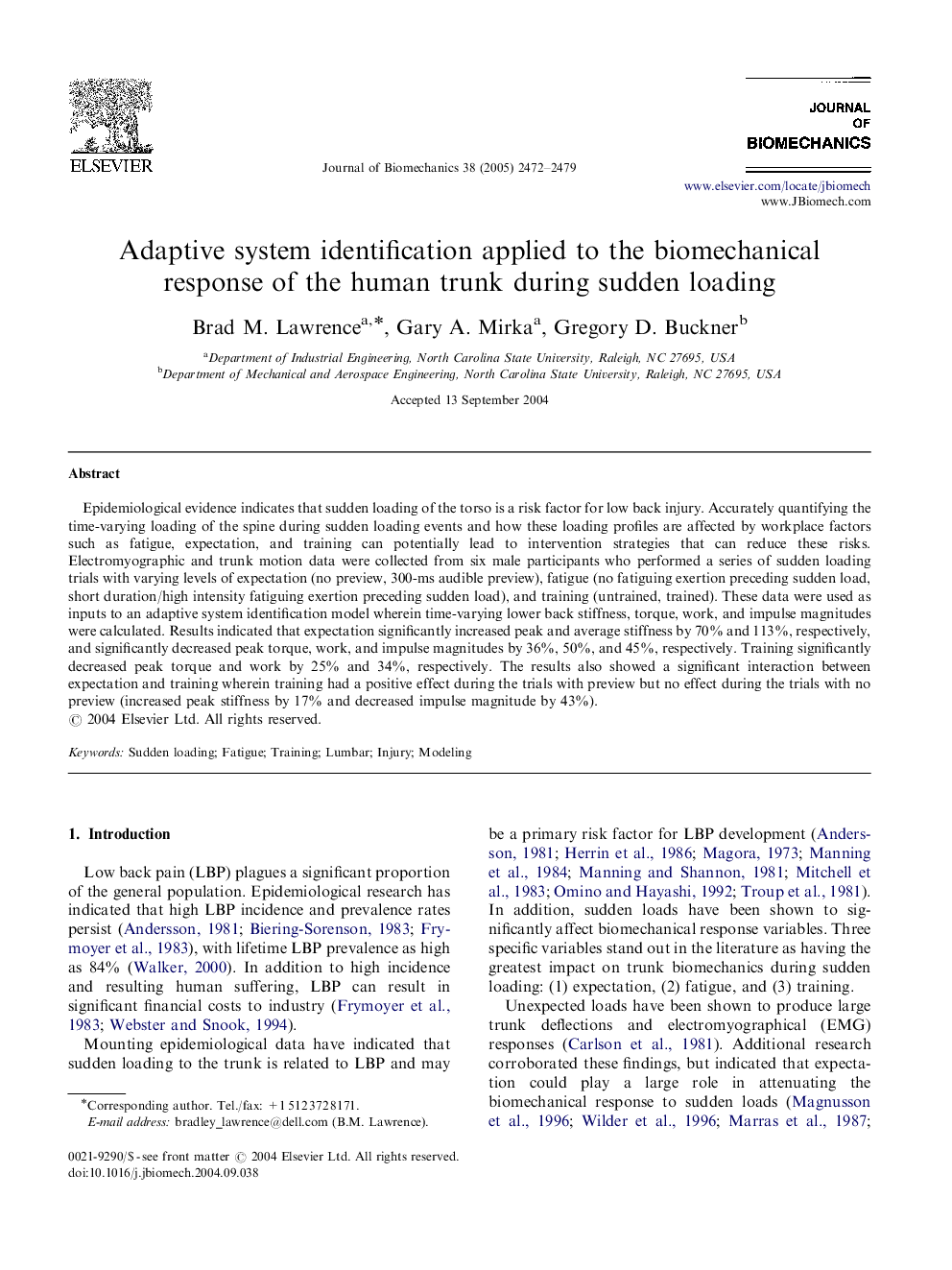| Article ID | Journal | Published Year | Pages | File Type |
|---|---|---|---|---|
| 875222 | Journal of Biomechanics | 2005 | 8 Pages |
Epidemiological evidence indicates that sudden loading of the torso is a risk factor for low back injury. Accurately quantifying the time-varying loading of the spine during sudden loading events and how these loading profiles are affected by workplace factors such as fatigue, expectation, and training can potentially lead to intervention strategies that can reduce these risks. Electromyographic and trunk motion data were collected from six male participants who performed a series of sudden loading trials with varying levels of expectation (no preview, 300-ms audible preview), fatigue (no fatiguing exertion preceding sudden load, short duration/high intensity fatiguing exertion preceding sudden load), and training (untrained, trained). These data were used as inputs to an adaptive system identification model wherein time-varying lower back stiffness, torque, work, and impulse magnitudes were calculated. Results indicated that expectation significantly increased peak and average stiffness by 70% and 113%, respectively, and significantly decreased peak torque, work, and impulse magnitudes by 36%, 50%, and 45%, respectively. Training significantly decreased peak torque and work by 25% and 34%, respectively. The results also showed a significant interaction between expectation and training wherein training had a positive effect during the trials with preview but no effect during the trials with no preview (increased peak stiffness by 17% and decreased impulse magnitude by 43%).
